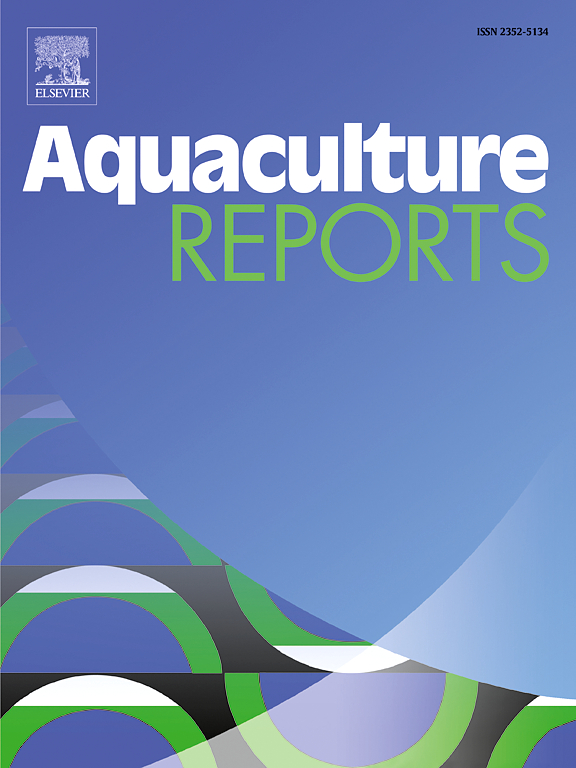Optimal dietary vitamin E level facilitates ovarian development of female largemouth bass (Micropterus salmoides) broodstock
IF 3.2
2区 农林科学
Q1 FISHERIES
引用次数: 0
Abstract
The current study was designed to explore the effects of dietary vitamin E on the ovarian development and health of female largemouth bass (Micropterus salmoides). Five experimental diets were formulated, each containing varying concentrations of vitamin E: 78.25, 98.36, 209.31, 437.77, and 915.49 mg/kg of vitamin E. These diets were administered to female largemouth bass (445.52 ± 13.57 g) for 35 days. The results demonstrated that fishes fed with 209.31 mg/kg vitamin E exhibited a significantly higher gonadosomatic index (GSI), visceral steatosis index, absolute fecundity, and relative fecundity compared to those fed with 78.25 mg/kg of vitamin E (P < 0.05). Meanwhile, it was observed that a predominant number of ovarian cells in fish fed 209.31 and 437.77 mg/kg of vitamin E had advanced to maturation, primarily consisting of mature oocytes at stage IV and V. Dietary vitamin E supplementation significantly upregulated the expression of genes involving vitamin E transfer, ovarian development, and hormone, including alpha-tocopherol transfer protein, luteinizing hormone, follicle-stimulating hormone, vitellogenin receptor (vgr), vitellogenin (vg), 17-beta-hydroxysteroid dehydrogenase (17β-hsd), cyclin-dependent kinase 2 (cdk2), and cytochrome P450 family 17 (cyp-17), with the highest expression levels detected in the 209.31 mg/kg group (P < 0.05). Additionally, 209.31 mg/kg of vitamin E also significantly increasing the immunity by reducing the activities of glutamic oxaloacetic transaminase and glutamic pyruvic transaminase in the serum, while increased the activities of alkaline phosphatase and acid phosphatase when compared to the 78.25 and 915.49 mg/kg groups (P < 0.05). 209.31 and 437.77 mg/kg of vitamin E significantly enhanced the antioxidant capacity of fish (P < 0.05). The optimal dietary vitamin E requirement was determined as 255.10–292.72 mg/kg based on GSI, absolute fecundity, and the expression levels of vg and vgr. In conclusion, the addition of 255.10 ![]() 292.72 mg/kg of vitamin E to the diet of largemouth bass broodstock is recommend to enhance ovarian development.
292.72 mg/kg of vitamin E to the diet of largemouth bass broodstock is recommend to enhance ovarian development.
求助全文
约1分钟内获得全文
求助全文
来源期刊

Aquaculture Reports
Agricultural and Biological Sciences-Animal Science and Zoology
CiteScore
5.90
自引率
8.10%
发文量
469
审稿时长
77 days
期刊介绍:
Aquaculture Reports will publish original research papers and reviews documenting outstanding science with a regional context and focus, answering the need for high quality information on novel species, systems and regions in emerging areas of aquaculture research and development, such as integrated multi-trophic aquaculture, urban aquaculture, ornamental, unfed aquaculture, offshore aquaculture and others. Papers having industry research as priority and encompassing product development research or current industry practice are encouraged.
 求助内容:
求助内容: 应助结果提醒方式:
应助结果提醒方式:


